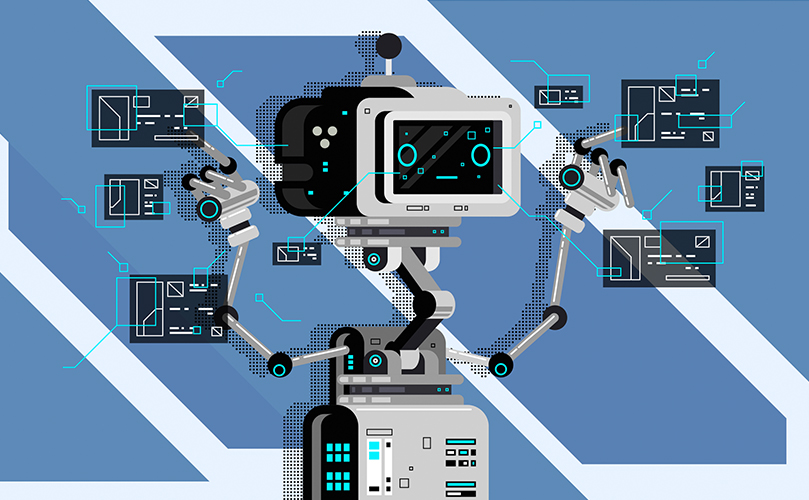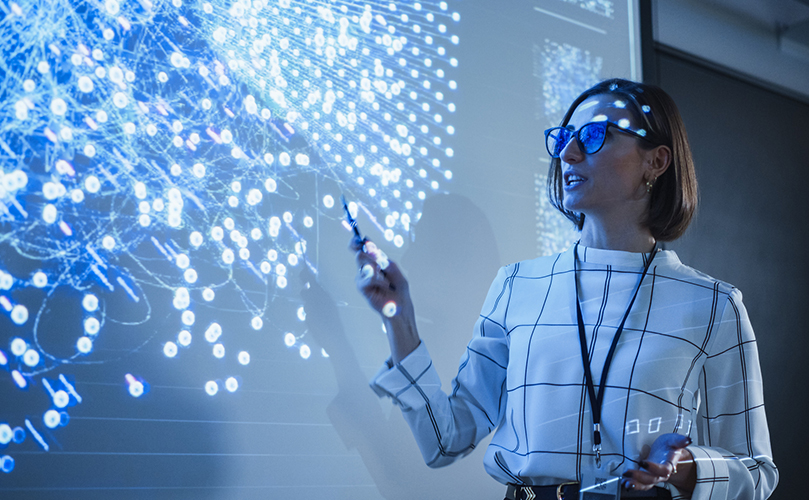Report on the Fujitsu Technology Strategy Briefing held in December 2024
Fujitsu Tackles Proprietary AI: AI + World-Leading Tech
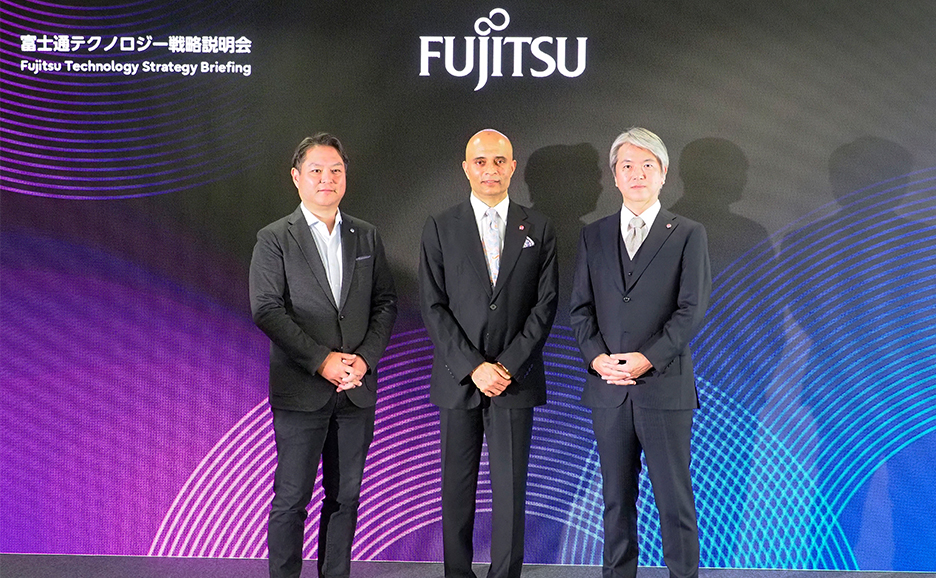
Report|2024-01-17
4 minute read
Fujitsu held a technology strategy briefing for members of the press, investors, and analysts on December 12, 2024. This article provides an overview of the briefing. The speakers were:
Vivek Mahajan, Corporate Executive Officer, Corporate Vice President, CTO, CPO, System Platform, Fujitsu Limited
Seishi Okamoto, Corporate Executive Officer, EVP, Head of Fujitsu Research, Fujitsu Limited
Yuzuru Fukuda, Corporate Executive Officer, EVP, CDXO, CIO, Fujitsu Limited
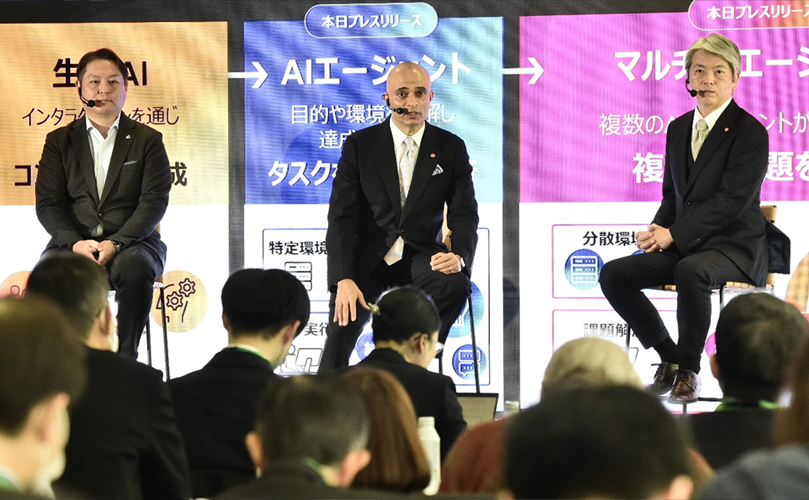
Partnering with customers on DX, centered on AI
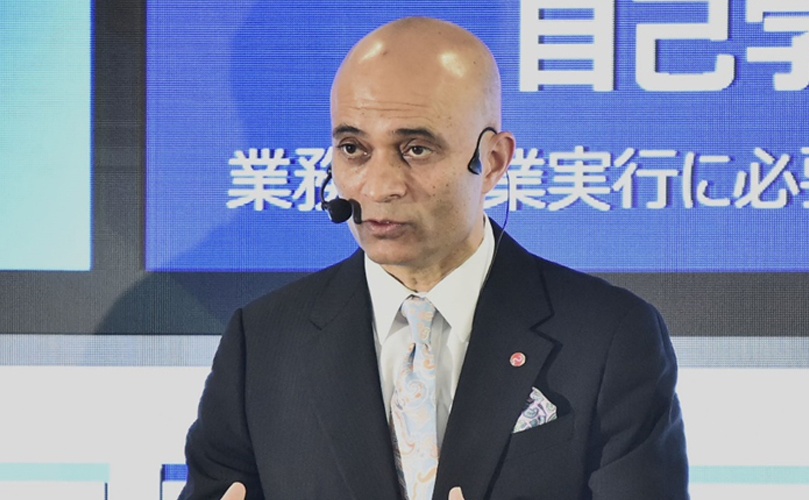
Vivek Mahajan, Fujitsu's CTO, kicked off the briefing with an explanation of the company's technology strategy. Fujitsu positions modernization, Uvance, and consulting as its three growth drivers. These are supported by five key technologies centered around AI: "Computing" for processing vast amounts of data, "Network" for connecting data, "Data & Security" for utilizing data in a secure environment, "AI" for extracting insights from data, and "Converging Technologies," which combines the humanities and social sciences with technology. These five key technologies will drive digital transformation (DX) for customers.
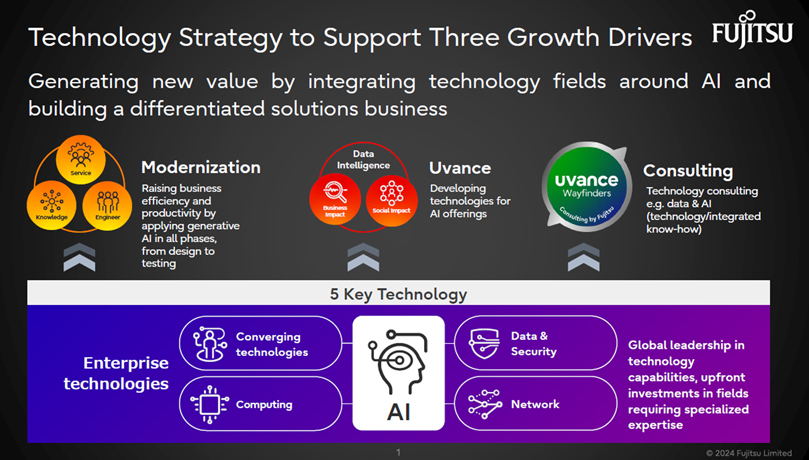
Taking on global challenges with AI and world-leading technologies
Regarding AI, the core of the five key technologies, Vivek stated that Fujitsu's strength lies in "providing solutions that address enterprise challenges and business processes." The value of Fujitsu's AI lies in its ability to securely handle confidential data held by enterprises and provide solutions customized for specific business processes. Specifically, the "Generative AI framework for enterprises" makes this possible.
The Generative AI framework for enterprises consists of three technologies, all proprietary to Fujitsu: "Knowledge Graph Extended RAG," which expands the amount of data that Large Language Models (LLMs) can reference by using knowledge graphs to structure vast amounts of data; "Generative AI Amalgamation Technology," which automatically generates AI models specialized for business tasks without the need for prompt engineering or fine-tuning; and "Generative AI Trust," which audits whether the responses generated by AI comply with corporate rules and regulations.
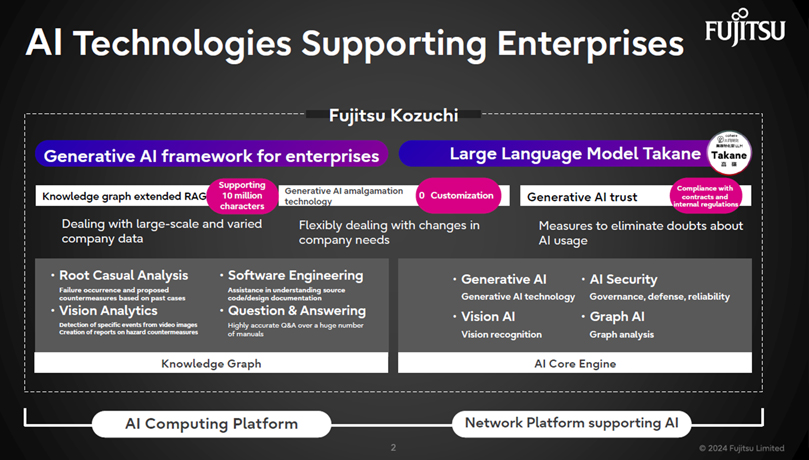
Vivek also outlined Fujitsu's AI strategy: "By fusing AI with Fujitsu's world-leading technologies, we will differentiate ourselves and take on the challenge of creating unique AI that can compete globally." Fujitsu possesses cutting-edge technologies such as the "FUJITSU-MONAKA," a 2nm Arm processor that balances high-speed processing of AI workloads with energy efficiency, superconducting quantum computing with technology investments aimed at exceeding 1,000 qubits by fiscal year 2026, Digital Trust to mitigate the risks of misinformation generated by AI, the All Photonics Network (APN), and Social and Ocean Digital Twins.
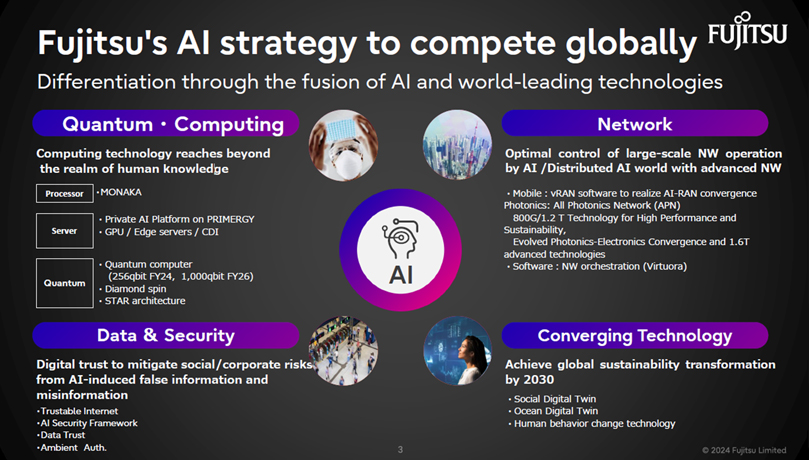
Co-creative and efficient learning: Fujitsu's multi-AI agent
Next, Seishi Okamoto, Head of Fujitsu Research, explained the technological updates to Fujitsu's AI agents and the newly announced "Workplace Operation Support Agent" and "Multi-AI Agent Security System."
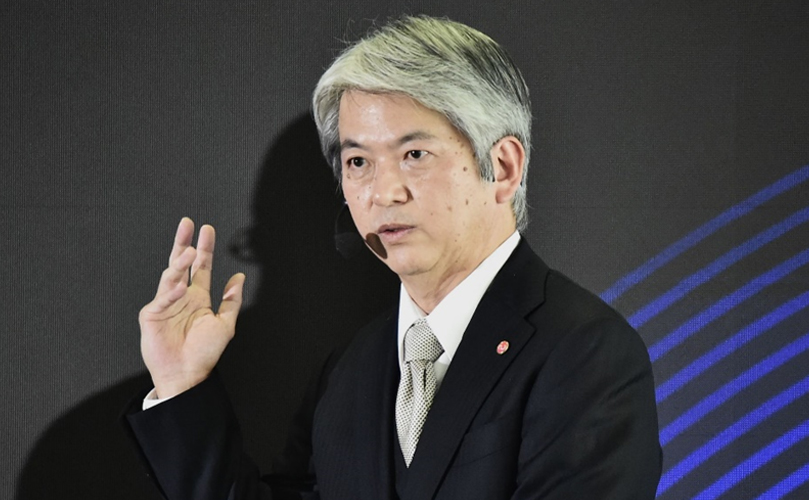
On October 23rd, Fujitsu announced the conversational AI agent "Fujitsu Kozuchi AI Agent." Okamoto explained, "A key feature of AI agents is their ability to self-learn about their environment. Therefore, how they learn about the environment is a crucial technological point." This time, Fujitsu has added a "Context memory" function to the AI agent, allowing it to efficiently learn only important contexts. Fujitsu has also enhanced the function that allows the agent to proactively self-learn the abilities required for tasks and operations. Furthermore, a guardrail function has been added to control the AI agent's behavior.
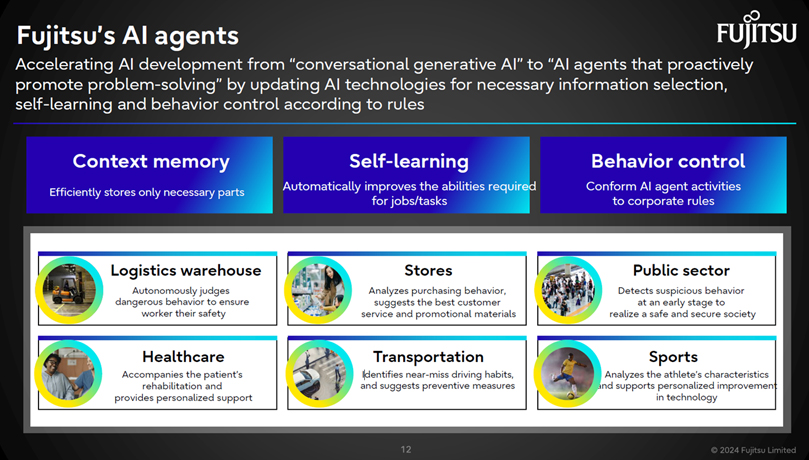
The newly announced "Workplace Operation Support Agent" is a video analytics AI agent that supports human work by autonomously making proposals for site improvement and creating work reports. It does this by spatially recognizing camera images from workplaces such as manufacturing and logistics facilities, and by referencing documents such as work instructions and safety regulations. Its enhanced self-learning function allows it to acquire spatial and task recognition capabilities, and its context memory function enables high-accuracy analysis of long-duration video with minimal video storage capacity.
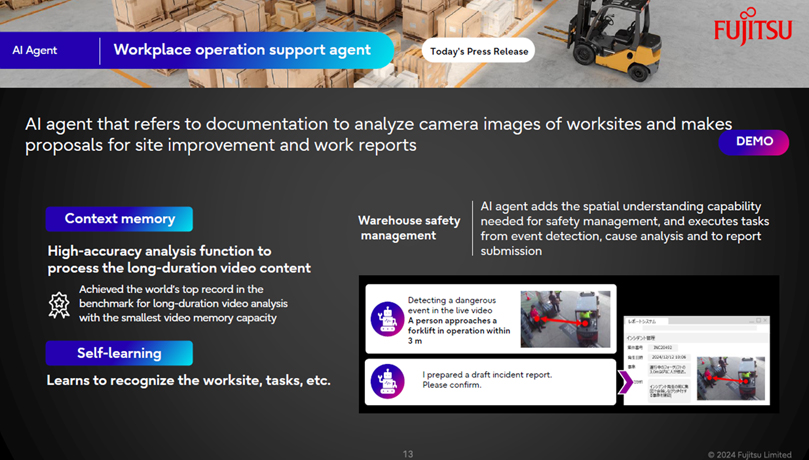
Also the newly announced, "Multi-AI Agent Security System" supports security measures against new threats such as attacks exploiting vulnerabilities in IT systems and attacks on generative AI. This is achieved through the collaboration of multiple AI agents with specialized skills and knowledge in security.
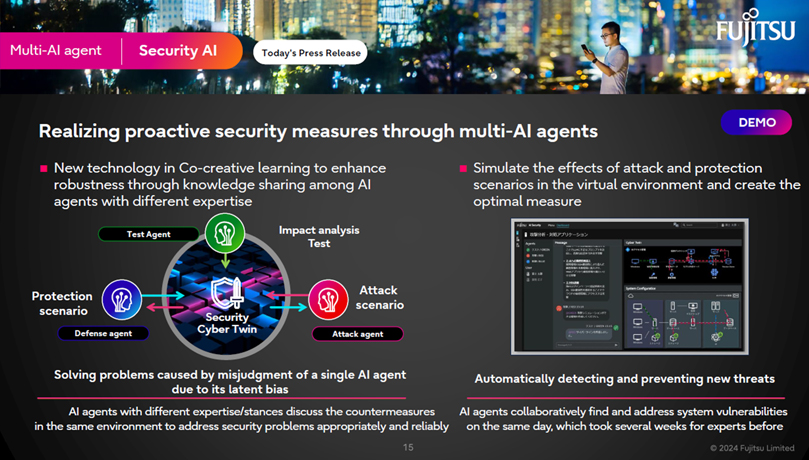
Okamoto also outlined three elements of Fujitsu's vision for a multi-AI agent world. The first is "Co-creative learning" technology, where multiple agents learn collaboratively and adversarially through interaction. The second is the "Secure agent gateway," which applies interoperability policies to the interaction space between agents to ensure security and reliability. The third is "AI Workflow Control" technology, which optimizes performance by controlling the division of labor and consistency of task execution among AI agents. The newly announced "Multi-AI Agent Security System" represents a new technology related to the first element, co-creative learning. Attacking agents, defending agents, and testing agents co-create in a virtual environment to automatically discover unknown vulnerabilities and execute optimal countermeasures.
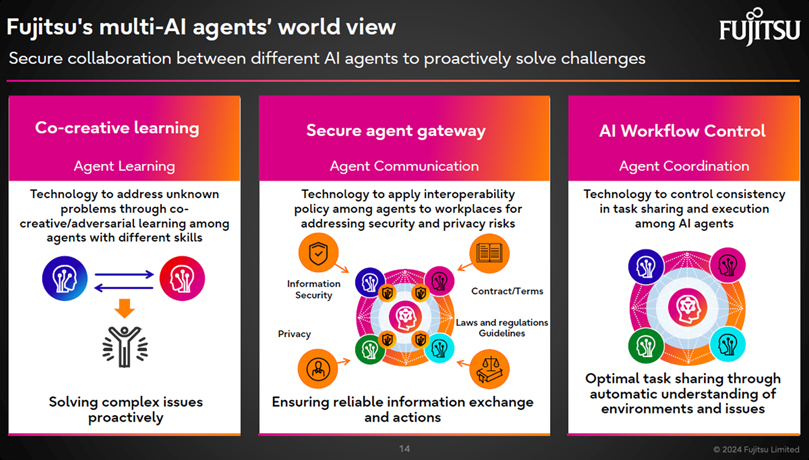
Co-creation between Generative AI and top musicians
Finally, Okamoto introduced a collaborative project between Fujitsu and Amadeus Code, a company that generates music through co-creation between AI and professional creators and presented a piece of music created through this collaboration. This piece was created using a new style of composition, employing training data from 40,000 copyrighted songs, allowing musicians to create inspired arrangements through interaction with generative AI. Yukihide YT Takiyama, B'z tour guitarist, Jun Inoue, music producer and President of Amadeus Code, and KOENMA, a sampling hip-hop composer, participated in the creation of this music.
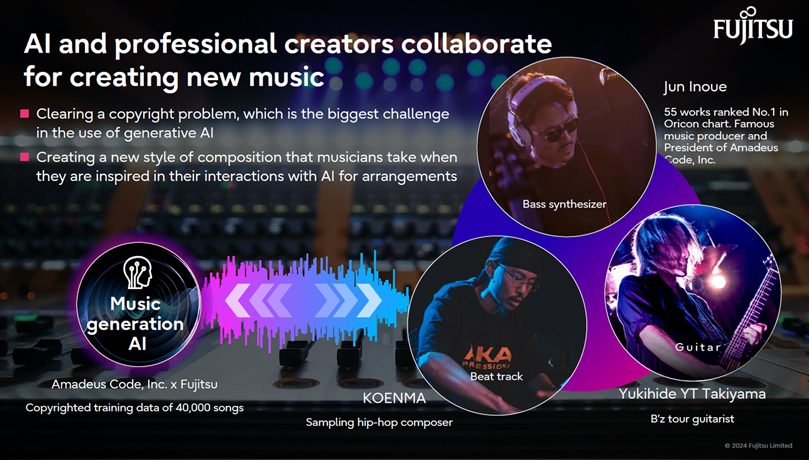
Implementing Multi-AI agents within Fujitsu
Lastly, Yuzuru Fukuda, Fujitsu's CIO, presented the current status of generative AI implementation within Fujitsu.
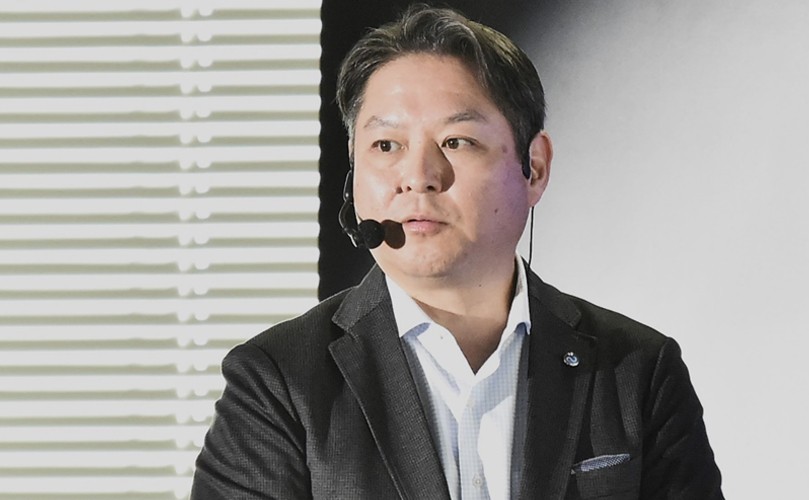
Fujitsu established a company-wide environment enabling the use of generative AI in May 2023. Now, about a year and a half later, approximately 35,000 employees are using generative AI for tasks such as code generation, proposal creation, report automation, and questionnaire analysis, with approximately 170,000 uses per day. Fukuda stated, "The number of uses has increased about tenfold compared to a year ago. The use of generative AI has become established in internal operations."
Internal use of AI agents is also progressing. For example, sales teams are using multi-AI agents when creating proposals for clients. When a prompt such as "I want to create a proposal for this purpose" is given to a conversational AI agent, multiple agents work together behind the scenes: an agent that identifies issues and creates hypotheses for client proposals, an agent familiar with Fujitsu's offerings, an agent that incorporates this information into the proposal content, and an agent that generates a PowerPoint presentation in the company format. This collaboration results in the output of an optimal proposal.

An analysis using "Root Causal Analysis," a feature of Fujitsu Kozuchi, revealed that the use of generative AI by employees has contributed to approximately 920,000 hours of work efficiency improvements in one year.
Vivek Mahajan
Fujitsu Corporate Executive Officer, SEVP, CTO, CPO, Co-Head of System Platform
Mahajan embarked on his career as a technology specialist in Silicon Valley after earning a master's degree in electrical engineering and an MBA in financial accounting. He held leadership roles at several leading global companies, including Tandem Computers, General Electric, Siebel Systems, Oracle, and IBM. In July 2021, he took on the role of Global Chief Technology Officer (CTO) at Fujitsu.

Seishi Okamoto
Corporate Executive Officer, EVP, Head of Fujitsu Research,Fujitsu Limited
In 1991, Seishi Okamoto joined Fujitsu Laboratories, Inc. He is engaged in research and development of artificial intelligence, including machine learning, reasoning, natural language processing, and knowledge retrieval. In 2011, he became engaged in the development of new big data businesses and the training of data scientists at Fujitsu Limited for three years. After serving as the head of Artificial Intelligence Research Center, the head of Artificial Intelligence Labs, and Fellow of Fujitsu Research, he held his current position since April 2023. He is also a visiting professor at Tokyo Medical and Dental University.
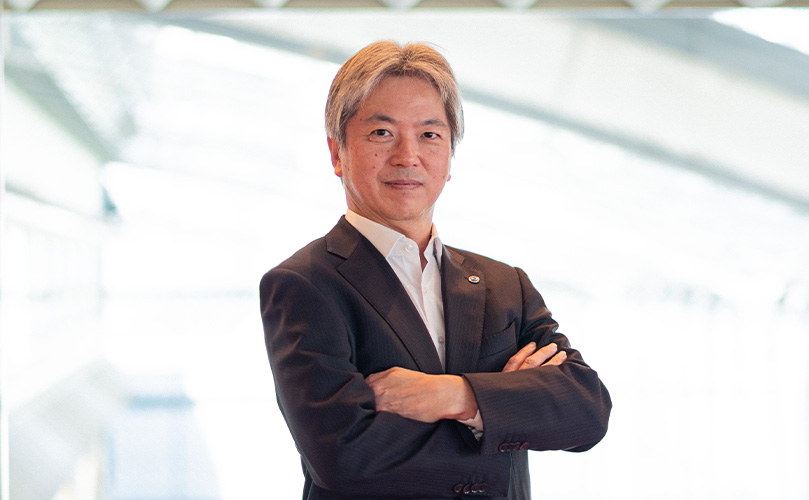
Yuzuru Fukuda Corporate Executive Officer, EVP, CDXO, CIO
Fukuda joined Fujitsu in 2020 as CIO and Deputy-CDXO (Chief Digital Transformation Officer), and assumed his current position in 2023. In this role, he is spearheading the exploration, implementation, and frameworking of DX based on Fujitsu- and Japan-originated methodologies, and to transform the IT systems, IT departments, IT human resources, and IT governance that promote these transformations.
Before joining Fujitsu, he worked at SAP Japan for 23 years, advising on and supporting management and business reforms through IT and digital technologies for large companies. He also served as President and CEO of SAP Japan from 2014 to 2020.

Related Information
